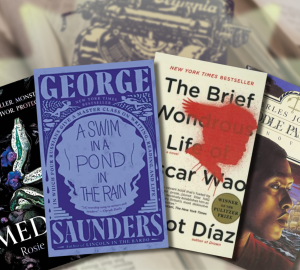10 Agatha Christie Mysteries Everyone Should Read
I recently read all of Agatha Christie’s mystery novels. Then I rewatched David Suchet’s “Poirot.” Now I have taken upon myself the solemn duty of compiling a list of recommendations for people who have read “Murder on the Orient Express” and “And Then There Were None,” and want to know where to go next. Because Agatha Christie wrote a lot of books — and not all of them are very good — here are my personal favorites in no particular order. For many of these books, I can’t explain precisely what makes them so clever and interesting without giving away the solution to the mystery. But, just trust me.

“The Murder of Roger Ackroyd” (1926)
If we agree that “Murder on the Orient Express” and “And Then There Were None” are the two most important works by Christie, “The Murder of Roger Ackroyd” should be the third. I can’t explain what makes it so groundbreaking without giving away the twist, but suffice to say, if you don’t know it’s coming, you don’t see it coming. The novel features Christie’s famous recurring private detective Hercule Poirot, who had retired to the countryside to grow vegetable marrows only to see one of the townspeople die in mysterious circumstances. It is brilliantly plotted.

“Lord Edgeware Dies” (1933)
This is another novel featuring Poirot. An actress’s husband is found murdered while the actress is at a dinner party, and later, a woman who impersonated that actress is also found dead from an overdose. Poirot investigates. The solution, when it is presented, was extremely unexpected and yet completely plausible. The story is well paced and exciting.
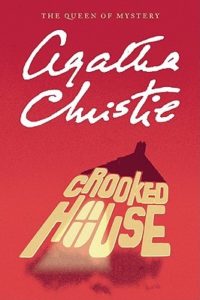
“Crooked House” (1949)
“Crooked House” features no recurring Christie characters, and is instead a novel told from the perspective of Charles Hayward, a young man engaged to a woman from a close-knit multigenerational family. The patriarch of the family is poisoned, and Charles’s fiance says she can’t marry him until the matter is solved. What follows is both sinister and surprising, with tension that keeps the reader turning the pages as quickly as possible.
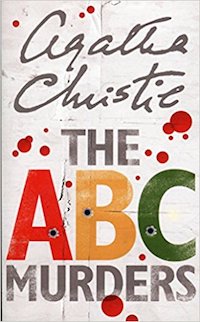
“The A. B. C. Murders” (1936)
In “The A. B. C. Murders,” Poirot investigates a series of murders. Alice Ascher is killed in Andover, Betty Barnard in Bexhill, and Sir Carmichael Clarke in Churston. There is an ABC Railway Guide left at each crime scene, and typewritten letters sent to Poirot to taunt him. This novel is interesting for combining first and third person to reconstruct the mystery in a way that puzzles and entertains the reader while experimenting with point of view. The resolution was clever and interesting, and the tension builds steadily and intensely.

“Cards on the Table” (1936)
“Cards on the Table” examines the psychology of criminals and detectives in a very unusual setup. A mysterious man hosts a dinner party to which he invites four detectives and four people he suspects to have murdered in their past. After dinner, the sleuths play bridge in one room while the others play in another room. The evening ends with their host stabbed in the chest with a weapon from his own collection, and it’s up to the four detectives — including Poirot and Christie’s fictional mystery writer Ariadne Oliver — to solve the case. It’s a very psychological book, less eventful and more contemplative than many of Christie’s other stories. Not for everyone, but I found it very enjoyable.

“Dumb Witness” (1937)
In “Dumb Witness,” a woman writes to Poirot believing she was the victim of a murder attempt, only to die of supposed liver problems before Poirot can respond. The titular “dumb witness” is a dog. There’s a dog, and there’s a solid three paragraphs from the dog’s point of view, and everyone loves the dog so much, and he is vital to the plot of this story, and I’m not saying the dog is the only reason you should read this book but he’s definitely one of the reasons. His name is Bob. I love him. The story itself is very solid and engaging as well.
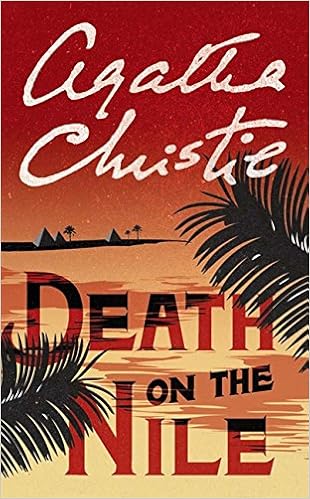
“Death on the Nile” (1937)
“Death on the Nile” is the story of a beautiful and sucessful socialite who is murdered on an Egyptian cruise, while the two people with the most motive to kill her have a violent altercation of their own. Drama and tensions are high in this story, and the atmosphere created by the setting only serves to enhance the suspense. The solution is as clever and plausible as it is surprising to the reader, and the end is tragic in a way that real life rarely is.
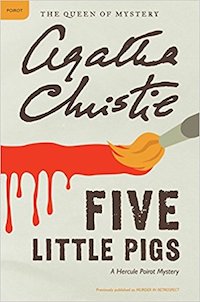
“Five Little Pigs” (1942)
“Five Little Pigs” is an unusual mystery, in which the daughter of a murder victim calls on Poirot 15 years after the fact to clear her dead mother’s name. There are no physical clues for Poirot to examine here, just the memories of the five people who were present at the scene of the crime. It’s an extremely psychological story, looking at the personality and character of the murder victim as well as the personalities of all five suspects. It’s also incredible prose. The last line of the novel still gives me chills thinking about it.
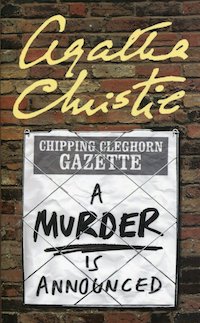
“A Murder is Announced” (1957)
I love Miss Marple as a character, but she appears in fewer stories than Poirot and her role as an amateur old-lady detective means she’s less proactive in her mystery-solving than the Belgian detective. Nevertheless, “A Murder is Announced” stands out from the rest of Christie’s body of work for its unusual setup. A notice appears the local newspaper reading “A murder is announced and will take place on Friday, October 29th, at Little Paddocks, at 6:30 p.m. Friends accept this, the only intimation.” The side characters in the story are charming and interesting, and Miss Marple uses all of her skills to her utmost advantage in uncovering a dangerous criminal.

“4:50 from Paddington” (1957)
Another Miss Marple novel, “4:50 from Paddington” starts with a seemingly unsolvable mystery. Mrs. McGillicuddy is on a train when she spots a man strangling a woman in the compartment of a different train running parallel to her own and in the same direction. She tells Miss Marple about it. Miss Marple investigates. It’s enjoyable how methodically and carefully Miss Marple untangles the various problems, first discovering where the body is, then who it was, and finally, who did it. Here the detective’s cleverness comes in not only at the end of the story, but shines through the whole book.




















